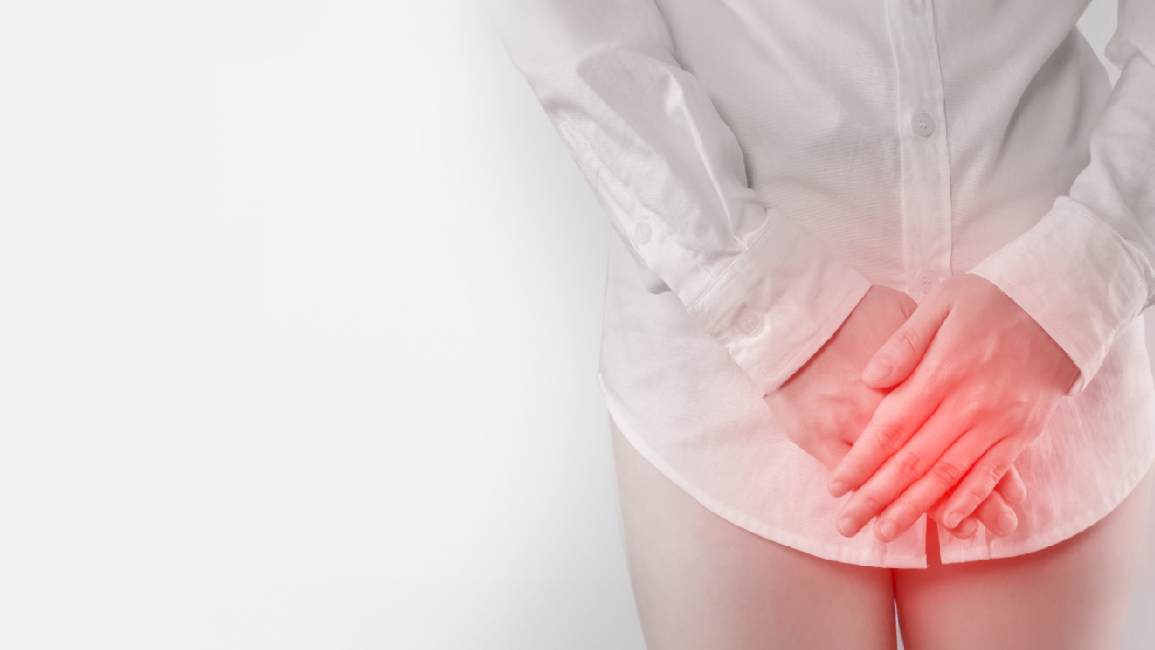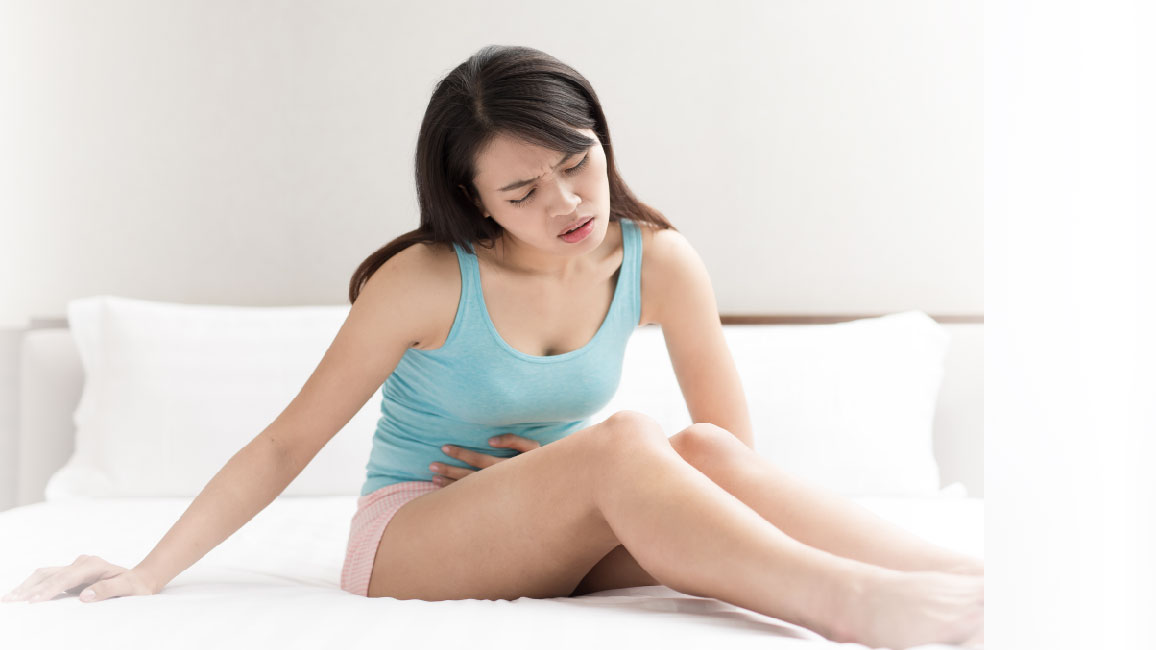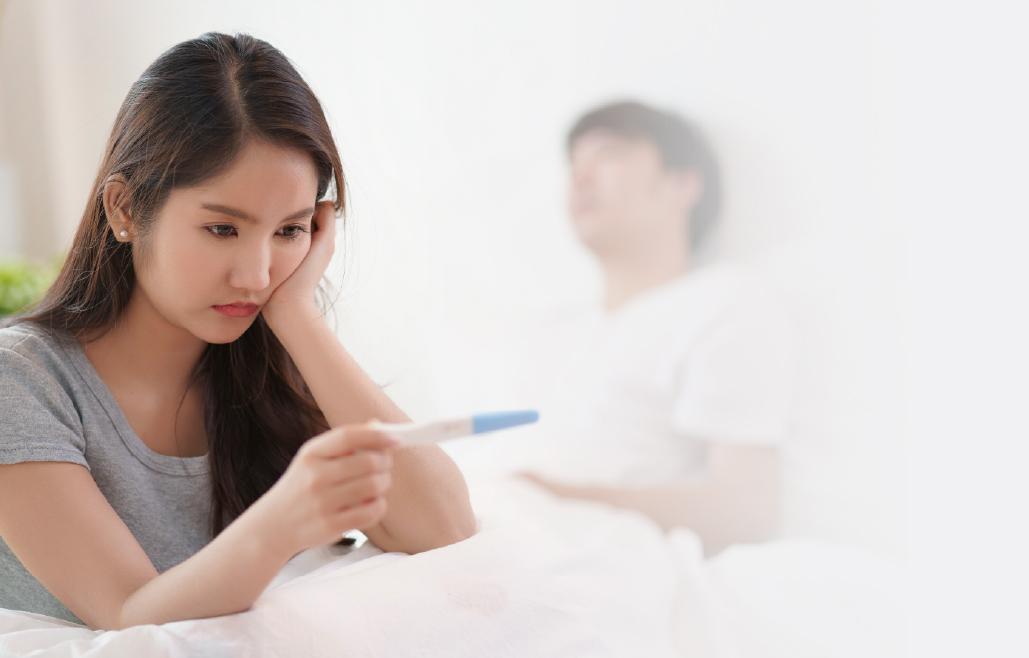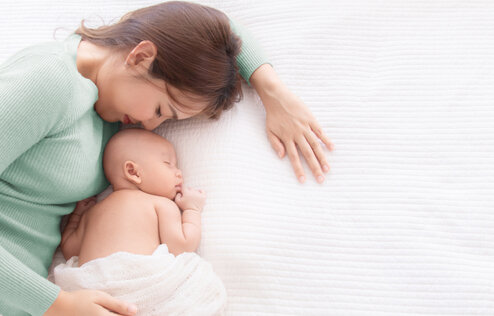Urinary Incontinence Treatment
Center : Nakornthon Gift Fertility Center, Women Health Center
Article by : Dr. Ong-Arj Bovornsakulvong
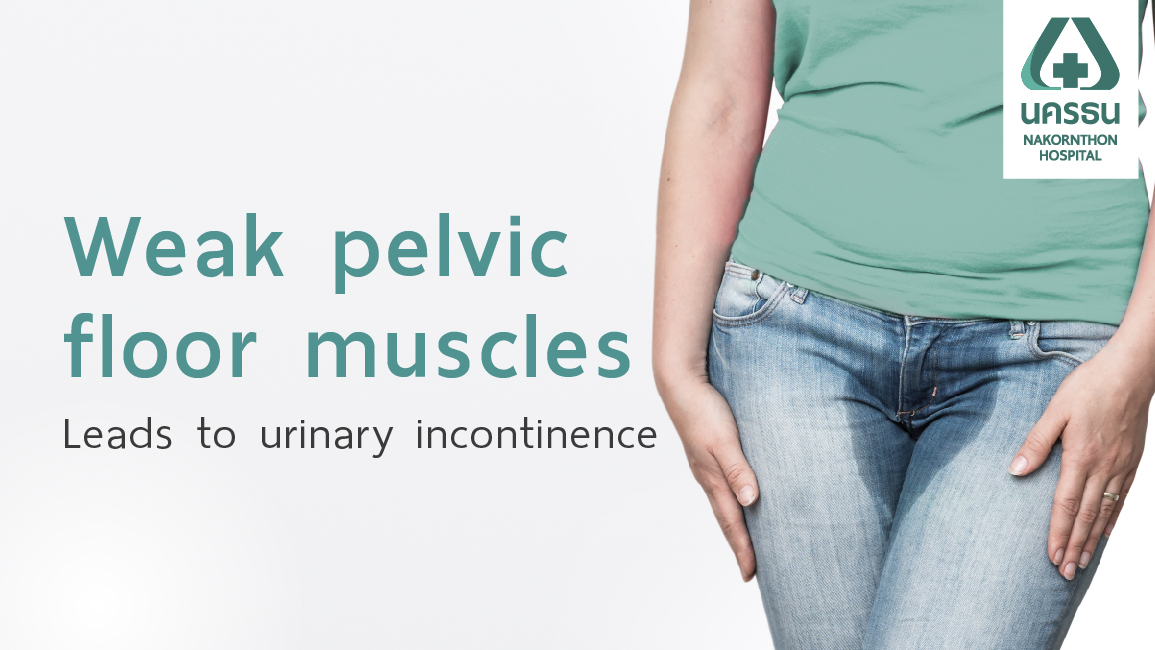
Choose to read by topic:
Urinary incontinence is quite common in women over the age of 40. The main symptoms include the inability to control the bladder, or urinary leakage when coughing or sneezing. The leakage is not considered normal; it is rather a condition that should not be ignored. Some women may think that it is embarrassing to have this condition. They may feel unconfident and anxious. It is recommended that people who have this condition seek professional help. Urinary incontinence treatments can vary, depending on the conditions. The treatments may include bladder training, medication, medical devices (laser) , and surgery.
What is Urinary Incontinence
Urinary incontinence is a condition in which a person is unable to control urine leakage. Urine leakage that occurs when coughing or sneezing is also considered urinary incontinence. It is usually caused by stress applied to the abdomen. However, as humans age, the ability to control the bladder decreases, resulting in incontinence. Women usually experience the condition more than men. Urinary incontinence treatments vary depending on the condition and health issues. Most of the time, pelvic floor exercises and bladder training can improve the condition.
Causes of Urinary Incontinence
The causes of urinary incontinence are mostly muscle-related. The muscles, the ligaments, and the supporting structures in the pelvic floor start losing their strength and endurance, hence the loosening of the anterior part of the vaginal wall. The loosening muscles cannot properly support the urethra. As a result, when a person sneezes or coughs, the pressure in the lower abdomen increases. The pressure causes the urethra and the sphincter to relax even more, allowing urine to pass through. Urinary incontinence is a condition that occurs when the bladder is unable to control itself and leaks.
There are various factors contributing to the condition. Here are some examples.
- Age. As humans age, the pelvic floor muscles start to gradually collapse. Degenerative changes are common and result in a lower bladder capacity.
- Menopause. When women have reached the age of menopause, estrogen production decreases. Estrogen helps maintain the strength of the bladder and the urethra. When estrogen production decreases, the muscles associated with bladder control begin to deteriorate.
- Child delivery. Childbirth also plays a role in urinary incontinence, especially if the women have a history of multiple deliveries. The process of delivery weakens the pelvic floor muscles, resulting in a weak bladder.
- Obesity. Obese people or those who have obesity due to excess fat are more likely to have urinary incontinence. The excessive weight applies more pressure to the lower abdomen, affecting the bladder. The bladder volume decreases, which likely results in urinary incontinence.
Treatments for urinary incontinence vary depending on the conditions and the causes. Hence, it is recommended that you seek professional advice to get a proper diagnosis.
Urinary Incontinence Symptoms
Many people experience minor urine leakage from time to time, while some people may experience it more frequently. The main symptom of the condition is urine leakage. However, it is also possible for people to experience the condition differently due to different causes. It is critical to properly categorize the types of conditions so that you can receive appropriate treatment.
Types of urinary incontinence are:
- Functional incontinence. This type of incontinence is caused by another functional or physical impairment, such as arthritis, that makes you unable to urinate in time.
- Overflow incontinence. It is recommended that you consult with a neurological doctor.
- Stress incontinence. As the bladder is located in the lower abdomen, any pressure applied to your bladder or your abdomen is likely to result in this type of incontinence. Some examples are coughing, sneezing, laughing, exercising, or lifting something heavy.
- Urge incontinence. You will feel the sudden urge to urinate, followed by an involuntary loss of urine. You will most likely need to urinate frequently during the day and night. Usually, it is caused by an infection, which is likely to improve with time. Some neurological conditions, however, can also cause urge incontinence.
- Mixed incontinence. It means that you experience more than just one type of urinary incontinence. Usually, mixed incontinence refers to a combination of stress incontinence and urge incontinence.
Urinary Incontinence Diagnosis
Here are some examples of how to diagnose urinary incontinence:
Physical examination
Physical examination. The doctor will take a medical history and examine you physically. Examples of questions are:
- how much fluid, alcohol or caffeine you drink
- whether you're currently taking any medicine
- whether you need the toilet frequently during the day or night
- whether the urinary incontinence happens when you cough or laugh
- whether you have any difficulty passing urine when you go to the toilet
A physical examination to diagnose urinary incontinence includes a pelvic examination. In this process, you may be asked to cough to see if there’s urine leakage. The doctor may apply some pressure to your bladder, examine your vagina, and ask you to squeeze your pelvic floor muscles.
Bladder diary
The bladder diary helps you follow your bladder habits. The doctor may suggest that you keep a bladder diary for at least 3 days to gather enough information for them. The details of the bladder diary include:
- how many episodes of incontinence you have
- how many times you experience an urgent need to go to the toilet
- how often you need to pass urine
- the amount of urine you pass
- how much fluid you drink
- the types of fluid you drink
Residual urine test
A residual urine test is often suggested if the doctor is suspicious of urge incontinence. A residual urine test is used to determine how much urine is left in your bladder after you urinate.
The method involves an ultrasound scan of your bladder. Sometimes, the amount of residual urine can be measured with a catheter. A catheter is a thin, flexible tube that’s inserted into your urethra and passed through your bladder.
Dipstick test
A dipstick test is usually suggested if the doctor is suspicious you have an UTI (Urinary Tract Infection). A sample of your urine will be tested for bacteria. A dipstick test involves dipping a small, chemically treated stick into your urine sample. If the colour of the stick changes, it indicates that bacteria are present. The dipstick can also test for protein and blood in the urine.
Complication of Urinary Incontinence
If a person doesn’t get proper treatment for urinary incontinence, they may develop other conditions. Complications of urinary incontinence include:
- Prolapse – The weakened pelvic floor muscles can cause the prolapse of the structures: the vagina, the bladder, or sometimes the urethra.
- Urinary tract infections – People with a history of urinary incontinence have more chances in developing urinary tract infections. Long-term use of a urinary catheter also significantly increases the risk of infection.
- Skin problems – As the skin is mostly wet all the time, a person with urinary incontinence is more likely to have skin sores, rashes, and fungal infections. The wet or damp skin is bad for wound healing as well.
Urinary Incontinence Treatment
Urinary incontinence treatments vary. It is important that you get a proper diagnosis from a healthcare professional before getting treatment. Here are some examples of treatments for the condition.
Pelvic Floor Muscle Exercises
Pelvic floor muscles help the bladder and the urethra function properly. Another major role of these muscles is to support the structures in the lower part of the abdomen. Pelvic floor exercises, or Kegel exercises, are specifically effective for stress incontinence. It could help with urge incontinence in some cases as well. The steps of Kegel exercises are:
- Imagine that you want to control your urination. Trying to stop your urine flow.
- Contract the muscles you would use to stop the urine flow and hold for 5 seconds. After that, relax for 5 seconds. (If it’s too difficult, you can start holding the muscles for 2-3 seconds and relax for 2-3 seconds. When you’ve progressed, try to hold your muscles for 10 seconds at a time.)
- Repeat it 10 times a day.
Bladder Training
Bladder training is another effective way to treat urinary incontinence. The purpose of this training is to lengthen the duration between trips to the toilet until you’re urinating every 2.5–3.5 hours. You can start by holding for 10 minutes after you feel the urge to go.
Electrical Stimulation
In order to stimulate and develop your pelvic floor muscles, temporary electrodes are put into your rectum or vagina. Although you may need numerous treatments spread out over several months, moderate electrical stimulation may help with both urge incontinence and stress incontinence.
Medications
Medications that are commonly used to treat urinary incontinence are:
- Topical estrogen. The urethra and vaginal tissues may benefit from the application of low-dose topical estrogen in the form of a vaginal cream, ring, or patch.
- Anticholinergics. These drugs may help with urge incontinence and can soothe an overactive bladder. Examples include trospium chloride, tolterodine (Detrol), oxybutynin (Ditropan XL), fesoterodine (Toviaz), darifenacin (Enablex), and tolterodine.
- Mirabegron (Myrbetriq). This medicine can increase the amount of urine your bladder can hold and is used to treat urge incontinence. It relaxes the bladder muscle. Additionally, it might allow you to urinate more frequently, which would help you completely empty your bladder.
Medical Devices
The doctor may suggest medical devices in some cases. The devices to treat women with urinary incontinence are:
- Urethral insert. a tiny, temporary device, similar to a tampon, that is put into the urethra before engaging in an activity that can cause incontinence, such as playing tennis. Before urinating, the insert is removed and serves as a stopper to stop leaking.
- Pessary. a flexible silicone ring that you can wear all day long inside your vagina. Women who have vaginal prolapse can also use the device. The urethra is supported by the pessary, which helps to stop urine leakage.
Urinary Incontinence Surgery
Urinary incontinence can be treated with surgery, such as:
- Sling surgery. Sling surgery is a procedure that involves making a cut in the lower abdomen and vagina. The sling is placed around the neck of the bladder to help control urine leakage. The sling can be made of tissue taken from an animal (xenograft sling), donated from another person (allograft sling), or taken from another part of your body (autologous sling). Mostly, the autologous sling will be used, as it is made from part of the tissue that covers the abdominal muscles (rectus fascia). Generally, sling surgery is preferred and popular because of its effectiveness and safety over the long term.
- Colposuspension. The method involves cutting the lower abdomen to lift the neck of the bladder and stitching it in the lifted position. Colposuspension is usually considered in cases of stress incontinence. There are 2 types of colposuspension: open colposuspension which is done with a large cut, and lapaoroscopic colposuspension which is done through one or more small cuts. Both types of colposuspension offer effective long-term treatment for stress incontinence.
- Vaginal mesh surgery (tape surgery). In vaginal mesh surgery, a synthetic mesh strip is put below the urethra, the tube that removes pee from the body, to support it. Sometimes, vaginal mesh surgery for stress incontinence is called tape surgery.
Laser Vaginal Rejuvenation
Laser Vaginal Rejuvenation is an innovative method designed to tighten the loose vagina. The procedure helps increase the flexibility of the pelvic floor muscles, resulting in proper function of the urethra. Hence, the improved condition of urinary incontinence.
Urinary Incontinence Treatment Conclusion
Urinary incontinence is a common condition that can happen to anyone, especially women who are older than 40 years old. The main symptom is urine leakage. People with this condition may experience it differently, depending on the causes of the condition. Treatments for urinary incontinence range from medications, pelvic floor exercises, bladder control, and surgery. If you are experiencing the condition, you can seek professional advice at Nakornthon’s Hospital. The hospital offers you a wide range of treatments with innovative medical technology and experienced specialists. It is suggested that you see a doctor to get a proper diagnosis and treatment.
Online Consultation
Article of Nakornthon Gift Fertility Center, Women Health Center
Infertility: A Common Reproductive Issue That Can Prevent Pregnancy



